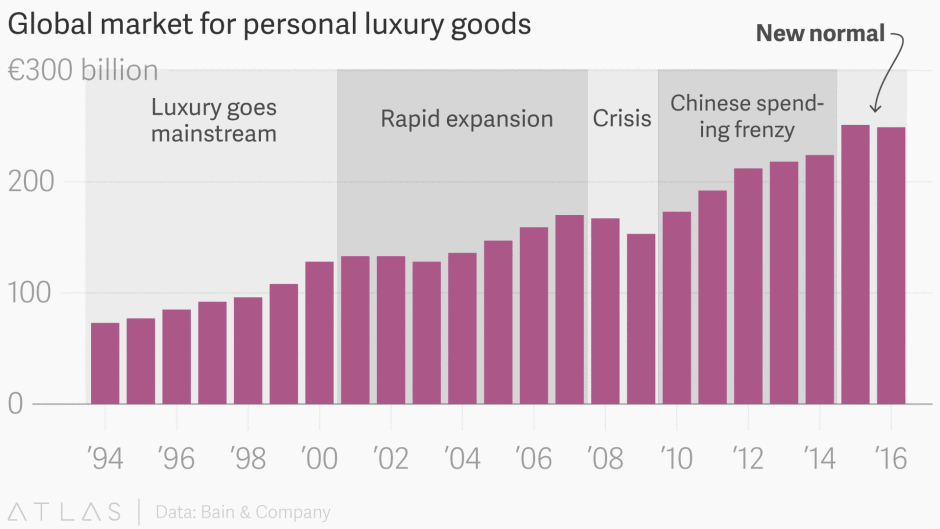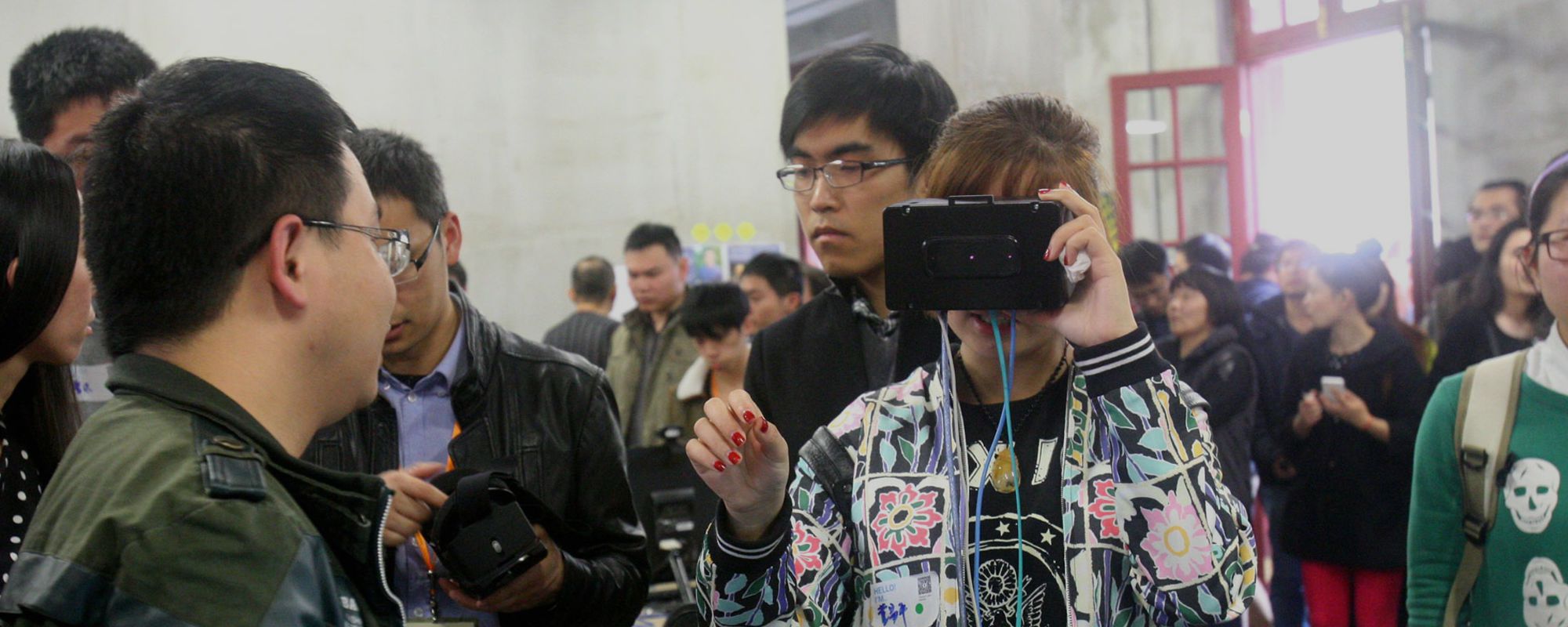The Luxury Industry, 2016, 2017 and the future
2016 was a difficult year for Luxury brands, from the wave of criticism and hate during the Lunar New Year directed at the Zodiac-themed products, to the downfall of sales in the hard luxury category, (jewelry and watches).
- The Americas and Asia (excluding Japan)—two major luxury markets—both contracted by 3% in 2016. Europe declined 1%, primarily due to a decline in tourism, and potentially would have performed worse were it not for strong sales in the UK (driven by a depreciated British pound during Brexit)
- Sales of hard luxury declined 5%, primarily driven by the continued difficulties of the watch category (down 8% vs. 2015 at current exchange rates)
- “Last year was a bad one for many companies selling expensive fashion, handbags, and jewelry.” writes Mark Bain, author at Quartz Media, “For the first time since the financial crisis of 2008, the global market for personal luxury goods failed to grow, stalling at €249 billion (about $258 billion).”
Fortunately however, according to a report made by management consulting firm Bain & Company, 2017 should see a steady return to growth. The following is a select range of statistics and trends compiled by Bain & Company’s team:
- The luxury goods market shows a marked shift in 2016 and has settled into a new normal characterized by slower growth. In this environment, companies no longer ride favorable market conditions to profitable growth.
- Increasingly, this market will be characterized by winners and losers. From 1994 to 2007, 87% of personal luxury goods companies were able to grow, and half posted growth rates in excess of 10%. From 2015 to 2016, by contrast, we forecast that fewer than half of all companies will grow, and just 14% will show double-digit growth.
- It’s believed that this is expected to grow at 1% to 2% in 2017 and a 3% to 4% compound annual growth rate through 2017 to 2020, to approximately €280 billion (at constant exchange rates).
A “New Normal” for Luxury Brands
Naturally with the chaos in the US and Europe, from Brexit, terrorism, and the US presidential election, the industry has seen a “new normal” of low single-digit growth and intense competition. The years ahead will produce “clear winners and losers,” Bain says, determined by which brands can read the field and respond best.
According to QZ, China is at the center of this shift and it isn’t too difficult to see why:
- Chinese shoppers account for 30% of all sales of personal luxury goods.
- “We expect around 30 million new customers in the next five years coming from the Chinese middle class,” Claudia D’Arpizio, a Bain partner and lead luxury analyst, told Quartz in an interview last year.
However, the Chinese market is becoming less and less easy to satisfy, as the age of information and technology becomes more prominent with the future generations. Gone are the days where brands could blindly throw a dart into the shadows and hit a gold mine in the form of Chinese consumers.
- Investment company Exane BNP Paribas echoed the thought in a December research note to clients. “The peak of the largest nationality wave ever to benefit luxury goods is behind us,” the authors wrote. “Brands need a new paradigm, other than opening more stores in China and bumping up prices.”
What will this mean for Luxury brands?

Luxury brands will need to expect big changes in domestic sales, the “new normal”, and also geographical shifts in focus over the next decade.
- In fact, according to Bain & Company’s data report, the next big luxury market will likely be Africa. In particular, countries such as Congo, Angola and South Africa.
- Analyst D’Arpizio estimates this scenario won’t come about for seven to 10 years, meaning only moderate expansion for some time over the next several years.
- “In the new normal, we expect a compound annual growth rate (CAGR) of 3% to 4% for the luxury goods market through 2020, to approximately €280 billion,” Bain’s report says. “That is significantly slower than the rapid expansion from the mid-1990s to the late 2000s.”
- Other characteristics of this new period include an increase in domestic shopping. Last year, local purchases exceeded tourist purchases by five percentage points, the first time since 2001 that has happened.
- Digital sales will continue growing. Last year they accounted for 8% of the industry.
What is the best thing for businesses to do in this rapidly-changing market?
As the industry becomes more taxing and demanding, luxury brands will be forced to rethink their strategies for success. Optimally, management agendas will need to include themes such as the following:
- Revitalizing domestic demand
- Adapting to volatile tourism flows
- Engaging customers more effectively and increasing staff productivity
- Focusing more on accessing the digital market
- Tailoring assortments to local preferences
- Determining the right role for stores in an increasingly multi-channel environment
Ultimately, any brand has the ability to succeed during this time. But whether or not they will, will depend on their ability to not only to maintain a desirable product line, but also their ability to adapt and willingness to enforce new processes and strategies in order to remain a competitor during these difficult times.
If you enjoyed reading this and would like to read more luxury related content, feel free to take a look at our Luxury Case Studies Library!






